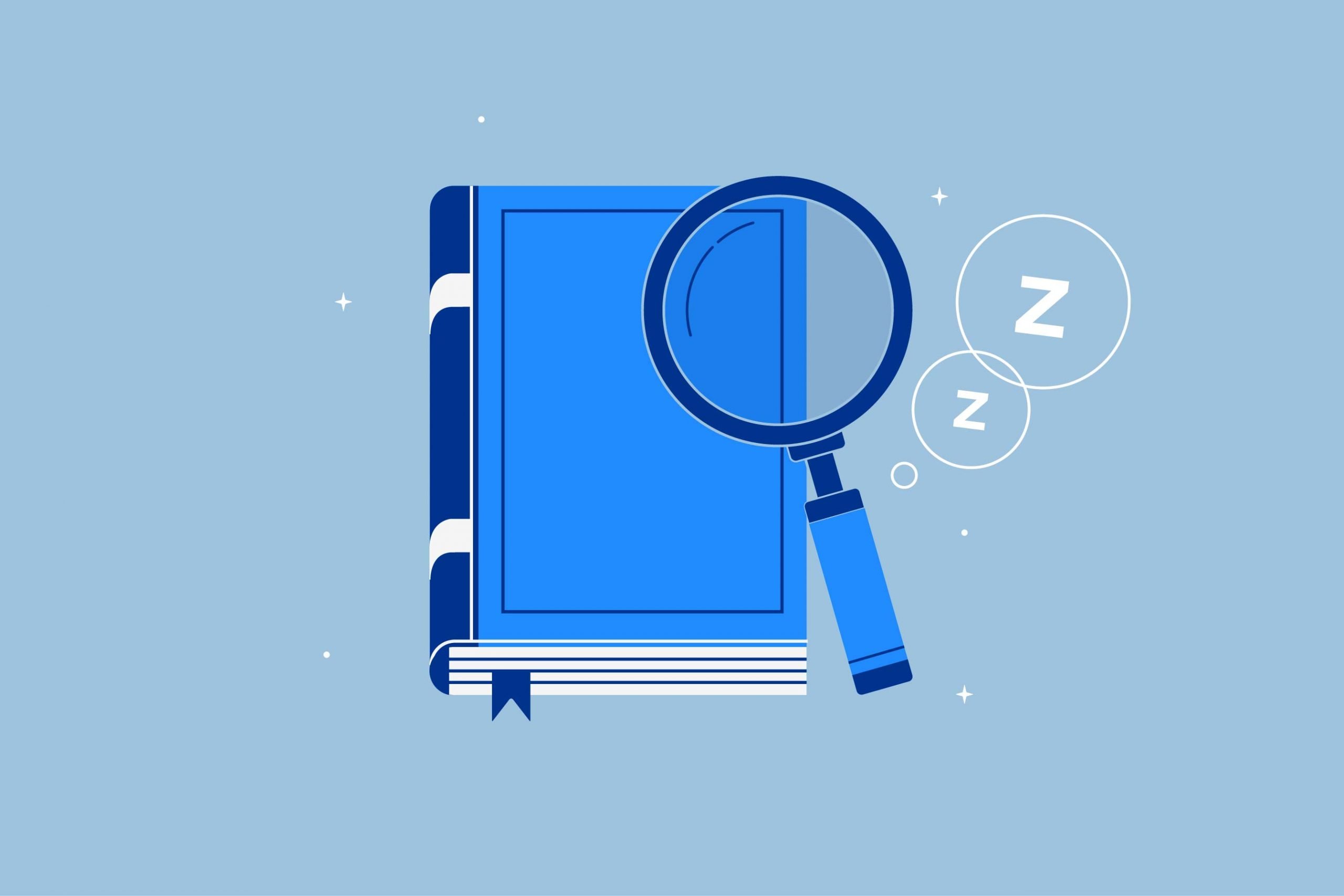Key Takeaways
- Types and Symptoms: Pediatric obstructive sleep apnea (OSA) primarily manifests as snoring in children. Other common symptoms include problems with breathing, choking or coughing during sleep, mouth breathing, frequent illness, restlessness, behavior problems, difficulty concentrating, school-related issues, and even bedwetting. Recognizing these symptoms is important for early intervention.
- Causes of Childhood OSA: The most common cause of pediatric OSA is the enlargement of tonsils or adenoids, which are lymphatic tissues located at the back of the throat. Obesity can also contribute to OSA in children. Additionally, factors like jaw abnormalities, genetic predisposition, and certain medical conditions like Down’s syndrome and cerebral palsy can increase the risk of pediatric OSA.
- Treatment and Diagnosis: Proper diagnosis of pediatric OSA requires consultation with a healthcare professional, typically a pediatrician or sleep specialist. Diagnostic methods may include physical examinations, X-rays, and sleep studies. Treatment options vary depending on the underlying cause and severity of the condition
There are two main types of sleep apnea in children and adolescents: central sleep apnea and obstructive sleep apnea. Central sleep apnea is a more common sleep disorder in infants under 12 months and is when there is a pause in breathing during sleep when the child makes no effort to breathe. Obstructive sleep apnea, or OSA, is when a child stops breathing while sleeping.
Obstructive sleep apnea-diagnosed children are typically evaluated through comprehensive assessments, including physical examinations, X-rays, and sleep studies, to identify the severity and underlying causes of the condition. In children, sleep apnea is usually the result of an obstruction in the airway related to childhood physical development.
Obstructive pediatric sleep apnea is relatively common and primarily affects children between the ages of two and six. However, pediatric obstructive sleep apnea can happen to a child at any age, and it also affects adults.
Obstructive sleep apnea causes the body’s oxygen levels to drop, which leads to the child waking up. OSA can happen several times per night, adversely affecting a child’s sleep cycle. Children who do not get proper sleep can suffer harmful effects such as more frequent illness, learning disorders, and attention problems. In severe cases, there can be growth problems and heart trouble.
Obstructive sleep apnea-treated children may undergo various interventions, including lifestyle adjustments, continuous positive airway pressure (CPAP), and, in certain instances, surgical procedures, tailored to address the specific severity and causes of the condition.
Restless sleep in children with sleep apnea may involve frequent movements and disruptions caused by breathing pauses, emphasizing the condition’s potential impact on overall sleep quality.
The most common sign of obstructive sleep apnea in children is snoring; however, having restless nights where the child wakes up regularly for no apparent reason can also indicate obstructive sleep apnea.
Symptoms of Obstructive Sleep Apnea in Children
 While only a professional can properly diagnose pediatric obstructive sleep apnea, there are signs to look for if you are concerned.
While only a professional can properly diagnose pediatric obstructive sleep apnea, there are signs to look for if you are concerned.
Some of the more common symptoms Verified Source Medline Plus Online resource offered by the National Library of Medicine and part of the National Institutes of Health. View source include:
- Snoring: Loud snoring, fragmented sleep, trouble breathing, or brief moments of silence before loud snores or snorts during sleep. A child snoring is by far the most common symptom of obstructive pediatric sleep apnea.
- Problems breathing: Breathing through the chest without any air moving through the mouth or nose signals obstructive breathing and nasal congestion. Neuromuscular issues can be a common cause of the second type, where the child lacks normal muscle tone, leading to the collapse of the back of the throat during attempts to breathe.
- Choking or coughing: Typically, after a few moments of not fully breathing, the child may jerk or snort loudly as they finally push through the obstruction.
- Mouth breathing: In cases where a child is experiencing upper airway obstruction due to enlarged tonsils or adenoids, they may resort to breathing through their open mouth.
- Frequent illness: Lack of sleep, poor growth, and frequent night-time wakings lowers the immune system. Additionally, developmental issues with the tonsils, ear or ear canal, or temporomandibular disorder (TMJ) can also lead to sleep apnea.
- Restlessness: The problems associated with obstructive sleep apnea in children means discomfort and restlessness, causing the child to toss and turn throughout the night. You may even see a child wake up sideways or on the opposite end of the bed.
- Behavioral problems or sleepiness: Sleeplessness may cause anxiety, daytime sleepiness and irritability. A child who is not sleeping properly may have issues with temper, concentration, and patience.
- Difficulty concentrating: Going hand in hand with mood and anxiety issues from lack of sleep, your child can have symptoms similar to ADHD or hyperactivity and exhibit disinterest in learning or difficulty concentrating. This is an example of why we recommend a professional diagnosis.
- School problems: Behavior problems and attention issues will undoubtedly lead to problems at school. The child might even unfairly be labeled as a troublemaker or slow learner.
- Bedwetting: There can be several causes for bedwetting or nocturnal enuresis; however, a sleep study says that sleep apnea in children can leave them too tired to get up or cause them to sleep through the discomfort.
While your child may exhibit one or more of these symptoms if they have sleep apnea, it is always best to seek a professional opinion. The cause may not be sleep apnea as several issues can easily cause these symptoms. Your family doctor or sleep specialist is best for a diagnosis.
Causes of Obstructive Pediatric Sleep Apnea
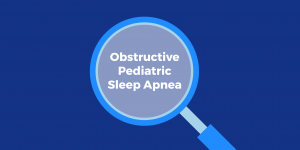 Being overweight is a common cause of sleep apnea in adults, and sleep apnea can affect weight in turn. However, that is not necessarily the case for children who have sleep apnea.
Being overweight is a common cause of sleep apnea in adults, and sleep apnea can affect weight in turn. However, that is not necessarily the case for children who have sleep apnea.
While weight can contribute to obstructive sleep apnea in children, the most common cause of obstructive sleep apnea in children is enlarged tonsils or adenoids. These glands are both lymph tissue located at the back of the throat and responsible for part of the body’s immune system.
This area may become inflamed due to illness, or the issue can be genetic. While sleeping, there is a decrease in muscle use, which can affect the airway and breathing. For this problem, most children have little problem breathing while awake when muscles have more stimulation.
Obesity can be one of the risk factors for OSA in children. Studies show that childhood sleep with obstructive pediatric sleep apnea occurs in 60 percent of children Verified Source National Library of Medicine (NIH) World’s largest medical library, making biomedical data and information more accessible. View source who are obese.
Finally, there are a variety of other possible factors that can cause obstructive sleep apnea in children. Problems with the jaw, such as an overbite, small jaw, large tongue, or Temporomandibular joint dysfunction (TMJ) can contribute to sleep apnea.
Factors increasing a child’s likelihood of having OSA encompass a family history of OSA, being overweight, birth defects or medical conditions like Down syndrome or cerebral palsy, and issues in the mouth, jaw, or throat that narrow the airway, along with a large tongue that may obstruct the airway during sleep.
Professor Dimitriou further adds that “Sleep apnea can go unnoticed in children with many other neurodevelopmental conditions including autism, hence families ought to discuss any of their concerns and signs with healthcare professionals.”
Obstructive Sleep Apnea Effects on Children
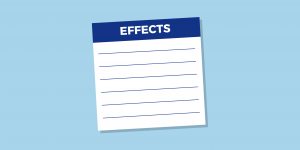 The problems that
pediatric obstructive sleep apnea
Verified Source
Medline Plus
Online resource offered by the National Library of Medicine and part of the National Institutes of Health.
View source
can cause can range from moderate to severe. Initially, mild sleep apnea cases can cause moderate well-being issues such as irritability and lack of ability to concentrate. These problems can spill into daily life, making the child forgetful, having problems focusing in school, and overall poor mood.
The problems that
pediatric obstructive sleep apnea
Verified Source
Medline Plus
Online resource offered by the National Library of Medicine and part of the National Institutes of Health.
View source
can cause can range from moderate to severe. Initially, mild sleep apnea cases can cause moderate well-being issues such as irritability and lack of ability to concentrate. These problems can spill into daily life, making the child forgetful, having problems focusing in school, and overall poor mood.
In more severe cases, sleep apnea can have lifelong threats to health. Obstructive sleep apnea in children leads to reduced oxygen entering the lungs. Over the long term, lack of oxygen flow can lead to permanent heart and lung damage. In addition, low oxygen can lead to stunted growth and mental development.
Children with obstructive sleep apnea will need to make life adjustments to improve their situation and get the amount of sleep a child needs:
- A quality mattress for sleep apnea with proper pillow placement can potentially reduce OSA-related discomfort in addition to allowing more restful moments of deep sleep.
- Diet, weight loss, and exercise can be a factor, particularly if the child is obese. Certain foods like leafy greens and healthy fats can reduce lymph node inflammation. Improving diet and exercise can improve OSA related to obesity.
Differences between Adult and Pediatric OSA
 Sleep apnea leads to physical and mental wellness issues in adults and children alike. The primary differences between pediatric obstructive sleep apnea and adult OSA are the cause and the resulting symptoms.
Sleep apnea leads to physical and mental wellness issues in adults and children alike. The primary differences between pediatric obstructive sleep apnea and adult OSA are the cause and the resulting symptoms.
In children, the reason is most likely developmental. In adults, the case is more likely to be obesity-related or due to smoking.
- Adults with obstructive sleep apnea Verified Source Medline Plus Online resource offered by the National Library of Medicine and part of the National Institutes of Health. View source often exhibit fatigue during the day. Adults are often sleepy and are more likely to want to take a nap during the day.
- Children are less likely to show fatigue but are more likely to react to sleeplessness in their behavior. Often, children suffering from OSA exhibit other symptoms similar to ADHD.
- Treatment for adults is often a CPAP machine.
- Treatment in children is usually surgery for sleep apnea, typically removing tonsils or adenoids. More recently, orthodontic solutions are becoming more popular in children, modifying the mouth to prevent obstruction while sleeping.
Testing for Obstructive Sleep Apnea
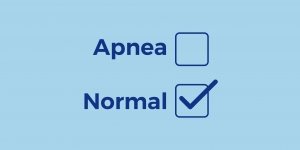 If you are concerned about your child’s breathing at night, the first thing you will want to do is speak to your child’s doctor. Next is to undergo an examination, possible X-rays, and interviews involving the child’s sleep habits and breathing patterns.
If you are concerned about your child’s breathing at night, the first thing you will want to do is speak to your child’s doctor. Next is to undergo an examination, possible X-rays, and interviews involving the child’s sleep habits and breathing patterns.
After this, the physician may want to refer the child to a specialist in sleep, ENT (Ear, nose, and throat), or a respiratory specialist. Many initial screenings are non-invasive and help determine the causes of the sleep issue symptoms.
In some cases, a sleep study or polysomnography may be necessary. Sleep studies are performed either at home or at an overnight clinic. Still, professionals prefer to avoid doing sleep studies on children at home.
A sleep study connects Verified Source Medline Plus Online resource offered by the National Library of Medicine and part of the National Institutes of Health. View source the child to electrodes while sleeping to monitor his or her’s sleep behaviors and patterns from brain function to muscle movement and eye movements. Polysomnography Verified Source Medline Plus Online resource offered by the National Library of Medicine and part of the National Institutes of Health. View source is entirely safe and non-invasive for the child and provides important information about the child’s sleep pattern. Such an overnight study will often give a complete report on one or more medical issues involving a child’s sleep.“Sleep apnea can go unnoticed in children with many other neurodevelopmental conditions including autism, hence families ought to discuss any of their concerns and signs with healthcare professionals.”
Dr. Dagmara Dimitriou, Professor of Sleep Education and Research
Solutions to Pediatric Obstructive Sleep Apnea
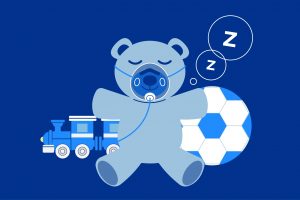 The cause determines the
treatment and therapy
Verified Source
National Library of Medicine (NIH)
World’s largest medical library, making biomedical data and information more accessible.
View source
for obstructive sleep apnea in children. A comprehensive exploration of both medical and surgical management for children diagnosed with confirmed obstructive sleep apnea (OSA) is undertaken, with a focus on medical management. After your doctor has completed their physical exam, diagnostics and has their results, they create an improvement plan.
The cause determines the
treatment and therapy
Verified Source
National Library of Medicine (NIH)
World’s largest medical library, making biomedical data and information more accessible.
View source
for obstructive sleep apnea in children. A comprehensive exploration of both medical and surgical management for children diagnosed with confirmed obstructive sleep apnea (OSA) is undertaken, with a focus on medical management. After your doctor has completed their physical exam, diagnostics and has their results, they create an improvement plan.
The primary cause of OSA is the enlargement of lymph glands such as tonsils and adenoids. The most common surgical solution is a tonsillectomy or adenoidectomy, which removes either the tonsils or adenoids, or an adenotonsillectomy, which removes both. Sometimes there are other surgical remedies from other abnormalities of the cranium as well.
If obesity is the cause of obstructive sleep apnea in the child, weight loss treatment is another solution. A pediatrician or dietician can assist with putting together a diet and exercise plan suitable to the child’s needs.
Sometimes, surgery is unlikely to be helpful, and a CPAP machine may be more beneficial. Discuss potential side effects of the recommended treatment with your child’s healthcare provider, as each surgical procedure carries its own set of potential risks. Consideration of a partial tonsillectomy is an alternative that reduces both postoperative complications and recovery time; however, studies indicate tonsillar regrowth rates ranging from 7.2% to 16.6%.
A continuous positive airway pressure mask, or CPAP, is a mask to be worn over the nose during sleep. The mask blows air through the nose and into the lungs to ensure a continuous supply of oxygen while sleeping. If the child requires a CPAP, then a pulmonologist or respiratory therapist is assigned to manage the proper usage.
In more mild cases of obstructive sleep apnea, steroid nasal sprays, saline rinses, or other allergy medications can reduce inflammation allowing improved breathing while asleep. However, such treatments can also work in conjunction with other treatments such as breathing training or other solutions.
There are some non-medical treatments for obstructive sleep apnea in children as well. A straightforward improvement is to remove allergens and inflammatory substances from the child’s diet and home, due to the connection between allergies and sleep apnea. Reduced throat inflammation can significantly aid in breathing while sleeping.
Additionally, a firm mattress with an adjustable base shows results Verified Source National Library of Medicine (NIH) World’s largest medical library, making biomedical data and information more accessible. View source in improving obstructive pediatric sleep apnea. A firm mattress can reduce pressure on the chest and body while sleeping. Head-of-bed elevation has also demonstrated improvement in OSA problems in children.
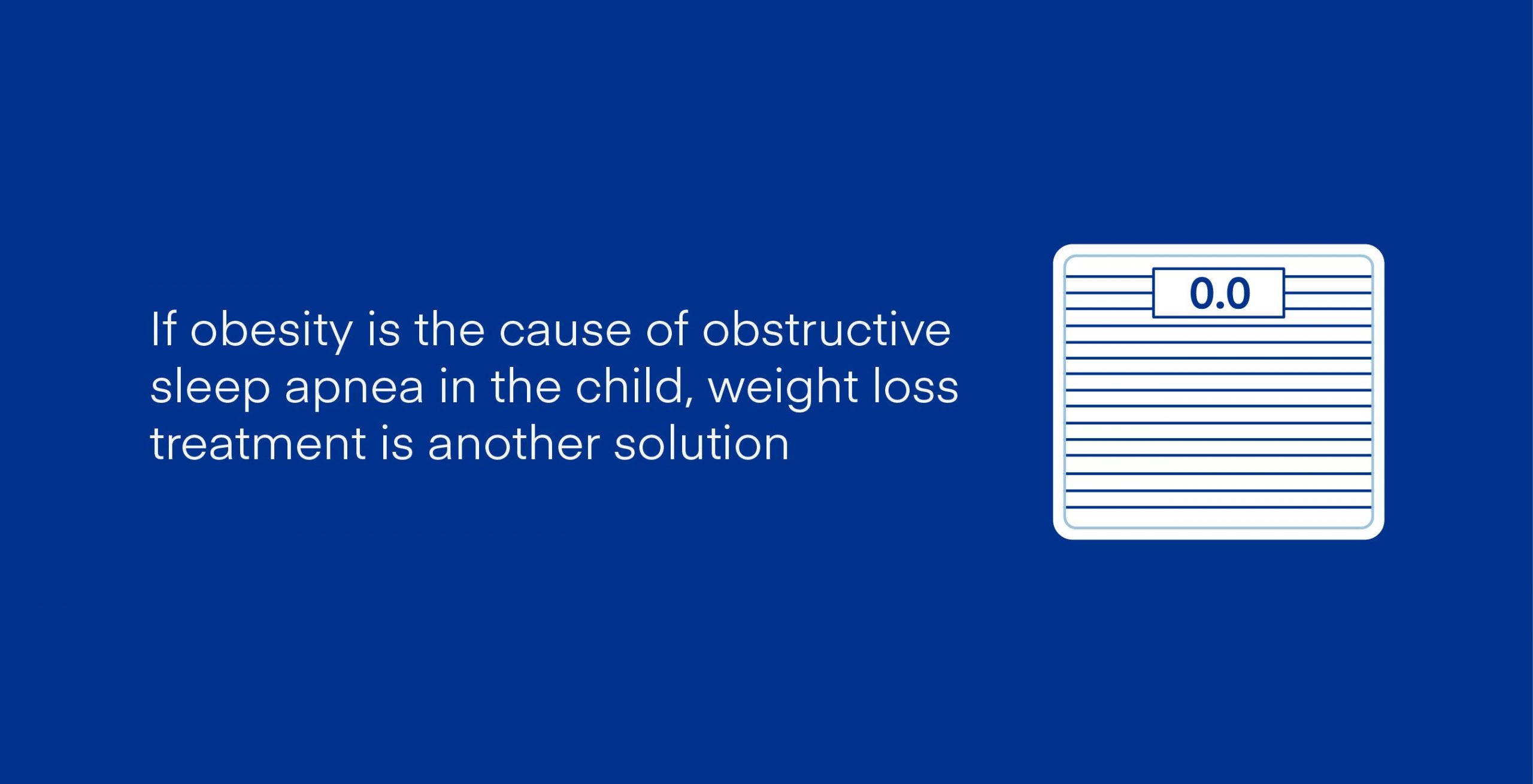
Frequently Asked Questions
Can a child grow out of sleep apnea?
Yes, a child can outgrow obstructive sleep apnea if it is not related to a medical and/neurodevelopmental condition, according to American Family Physician. Most children with obstructive sleep apnea experience mild symptoms.
Speaking with your child’s doctor can help you determine if your child needs time to grow out of sleep apnea or if more immediate measures should be taken, such as a tonsillectomy.
How do I know if my child has sleep apnea?
Children with sleep apnea may snore loudly or experience pauses in their breathing as they sleep. They may also sleep restlessly, breathe with their mouth open, wet the bed, and experience sleepwalking or night terrors. Parents may also observe daytime symptoms such as sleepiness and a desire to overly nap, a headache in the morning, a nasal voice, or irritability.
If you suspect your child has sleep apnea, we recommend taking them to see their normal pediatrician as soon as possible. Because sleep apnea in children is linked to craniofacial abnormalities, a physical examination by a healthcare provider will look at aspects of their head and face. How a child will be examined for a naval obstruction depends on their age.
What should I do if my child has sleep apnea?
Our advice to parents who suspect their child has sleep apnea is to speak with the child’s regular physician. The doctor may suggest medication, CPAP or BiPAP therapy, or an oral appliance. If a child’s tonsils are overly large, a tonsil removal surgery can eliminate sleep apnea symptoms. Similarly, an adenoid removal surgery can broaden a child’s airway.
Is sleep apnea rare in children?
Sleep apnea is relatively uncommon in children, with the American Family Physician estimating between 1 to 10 percent of children develop sleep apnea. Children may develop sleep apnea because of abnormal tonsil growth, neuromuscular disease, and craniofacial abnormalities, or family history. Childhood obesity or hyperactivity can also be risk factors.
How should a child with sleep apnea lie down?
As with adults who have sleep apnea, we recommend children lie on their sides to maintain an open airway. Parents may want to place a body pillow behind their child’s back and give them a soft toy to hold, both of which can prevent them from rolling onto their back or stomach.
A side sleeping child will also require a mattress with cushioning materials, lest they wake up sore and in pain.
Can children have central sleep apnea?
Yes, children can experience central sleep apnea (CSA), although it is relatively uncommon compared to obstructive sleep apnea in this age group. Central sleep apnea in children occurs when the brain fails to send the appropriate signals to the muscles responsible for breathing during sleep. Unlike OSA, which is typically caused by physical obstructions in the airway, CSA involves a disruption in the respiratory control center in the brain.
Children with central sleep apnea may exhibit symptoms such as pauses in breathing during sleep, disrupted sleep patterns, and daytime fatigue. Identifying and diagnosing central sleep apnea in children often requires a thorough evaluation by a pediatric sleep specialist. Treatment options may vary and can include addressing underlying medical conditions or using positive airway pressure therapy. Read more about central sleep apnea and obstructive sleep apnea.
Now What?
If you feel your child may be suffering from obstructive pediatric sleep apnea, consult your family doctor or another professional on what steps to take. While OSA can be a relatively mild disorder that is manageable, obstructive sleep apnea in children can lead to behavior and school performance problems.
If left untreated, it can cause permanent heart and developmental damage. For these reasons, it is crucial to seek an evaluation as soon as possible to get answers.
Treatments vary, and symptoms do not mean diagnosis, so it is important to find out from a professional what is best for your child when determining the possible causes of and solutions to their symptoms.
About the author
April Mayer is a sleep expert and writer with a degree in exercise physiology. She has dedicated her career to exploring the relationship between sleep and productivity. Her insightful articles, such as "The Surprising Way Your Mood Might Be Messing With Your Productivity" and "Wake Up to More Productive Mornings," have been featured in reputable publications like Forbes, Greatist, Real Homes, Thrillist, Tom's Guide, and Eat This, Not That. With a passion for helping others lead more productive lives through restful sleep, April offers valuable expertise on foods and vitamins for better sleep. As a trusted member of the Early Bird team since March 2020, she continues to provide informative and well-researched content.
View all posts



